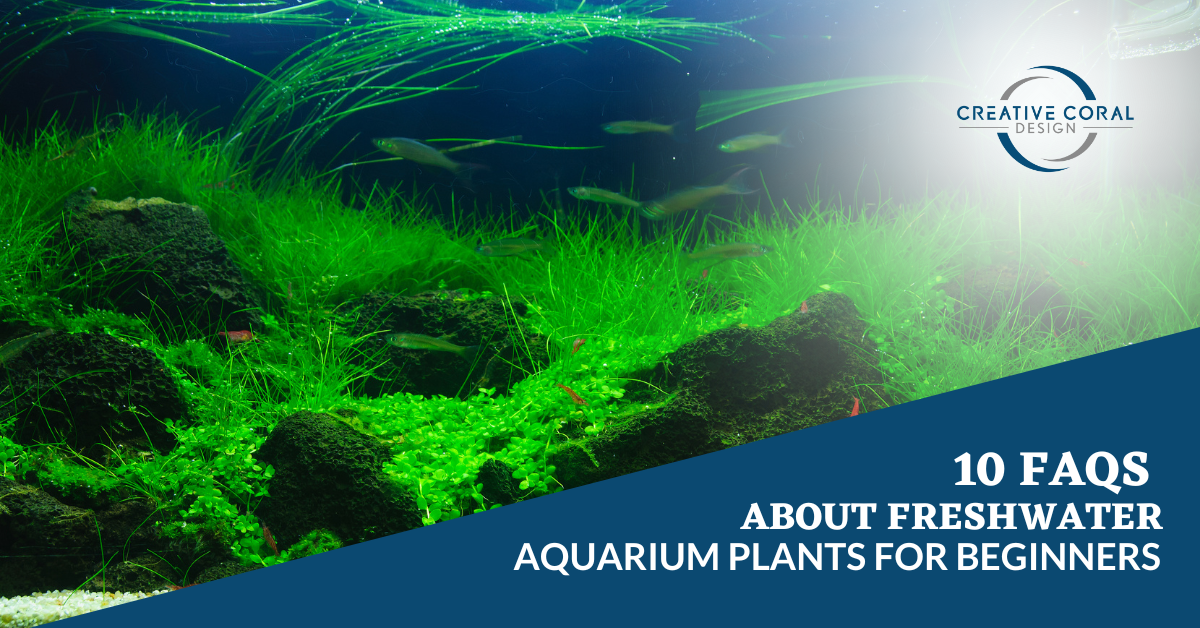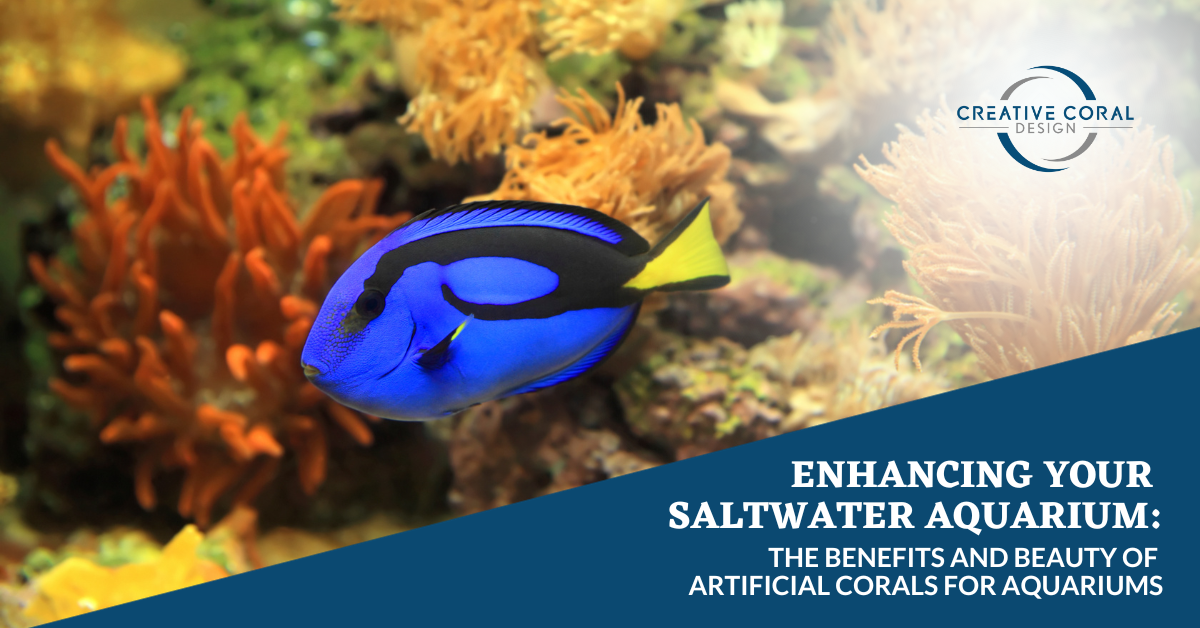Are you a beginner aquarist who wants to learn more about aquascaping? After all, planted or aquascaped tanks are a popular and rapidly expanding segment of the aquarium hobby.
As well as adding aesthetic value to any space, freshwater aquarium plants have several benefits for your pet fish, such as a balanced ecosystem where they can thrive.
But if you’re a beginner, there are many factors to consider before diving into freshwater plants. It involves a lot of effort, time, and patience. It’s a good thing there are alternatives that are easier to maintain, such as artificial corals and inserts. Additionally, we’ll introduce you to modular reef systems, which is an easy–to–install habitat for your marine life.
However, if you’re up for the challenge of taking care of live plants, our blog is here to guide you by answering essential questions you might have about freshwater aquarium plants. Have a good read!
Table of Contents
1. What are the benefits of freshwater aquarium plants?
Having an aquarium alone has many health benefits, including reducing stress, improving sleep quality, and lowering your blood pressure and heart rate. However, adding freshwater aquarium plants doesn’t only make your tank easier on the eyes, it also benefits your livestock.
Aquarium plants help emulate the natural habitat of fishes. Keeping live plants in the fish tank helps them flourish and thrive. Besides being an additional filtration system, live plants can remove decaying matter and waste excreted by the fish, reduce algae, and absorb nitrates.
The Importance Of Owning An Aquarium
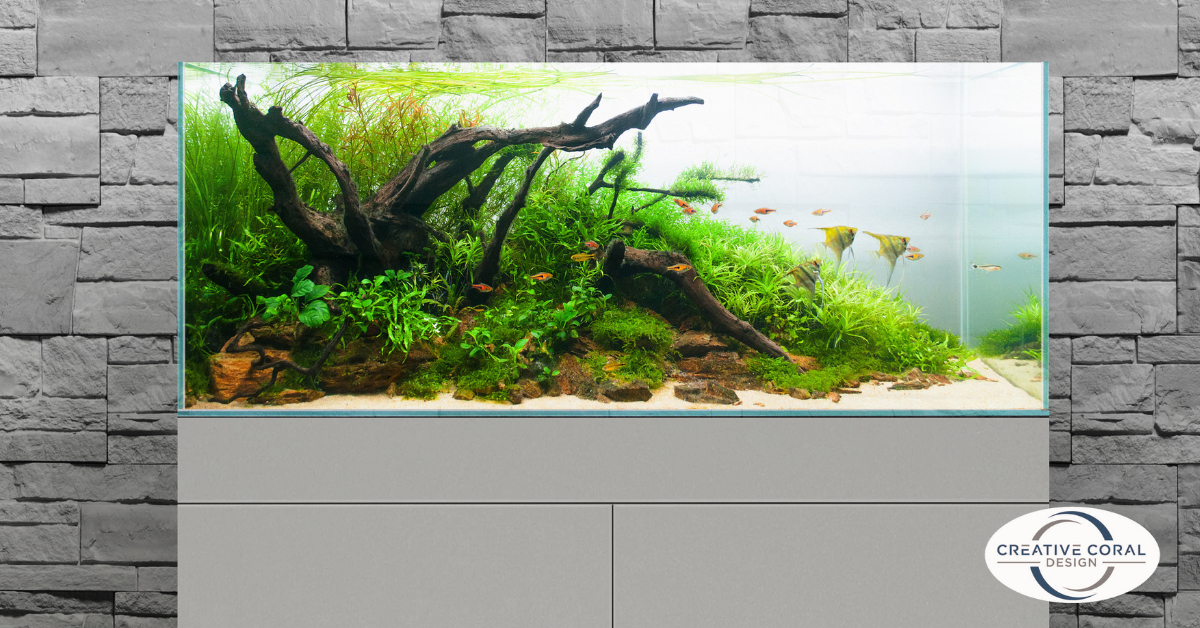
2. What are the types of freshwater aquarium plants?
Foreground plants, mid-ground plants, and background plants are the three main categories of freshwater aquarium plants.
Foreground plants cover your substrate and form a carpet. Some of the most popular plants in this category include Java moss, dwarf hairgrass, Anacharis, water lettuce, and African water trumpet. Mid-ground or mid-sized plants visually transition from the foreground to the tall plants at the back. Hence, it provides a balanced-looking aquascape as the plants appear stacked. Lastly, background plants are placed at the back of the fish tank, usually tall plants such as Vallisneria, swords, and Anubias.
3. Are aquatic plants complex to take care of?
No, aquarium plants are not as challenging to keep alive than you might think. You just need to be diligent and consistent in the upkeep of your tank. However, aquascaping requires proper planning, paying particular attention to lighting, and tank dimensions, using fertilizers and substrate, and choosing plant and fish species.

4. What is the easiest aquarium plant to take care of?
Beginner fish tank owners can try growing plants that are easy to maintain. One of the easiest plants to take care of is the Marimo moss ball. This is not moss or a plant but a ball of Cladophora algae. In addition to being simple to maintain, it is inexpensive and unique.
Another plant you can try is the Amazon sword, a classic aquarium plant famous for its ability to grow huge and cover your aquarium with luscious greenery. You can also plant other easy-to-grow plants like Cryptocoryne wendtii, Aponogeton crispus, Java moss, Java fern, Anachris, and Hornwort.
10 Most Popular Freshwater Fish for Beginners
5. What type of gravel is needed for them to thrive?
Aquarium gravel or substrate helps make the aquarium look more attractive as they come in various sizes and colors. In addition, it offers other advantages that make the tank an ideal home for your fish. The most critical function of substrate or gravel is biological filtration.
To choose the right type of gravel, you need to understand the plants you want to keep. For instance, if your plants are root feeders, they obtain their nutrients from the substrate. So, choosing a suitable substrate is very important.
The most common aquarium substrates are gravel and sand, giving the fish tank a more natural feel. Meanwhile, crushed coral, marble, and limestone increase the water pH, which is recommended for plants like African cichlids. Other fish tank enthusiasts use a multi-substrate, adding a base of sand, a middle layer of aquarium soil, and a top layer of gravel.
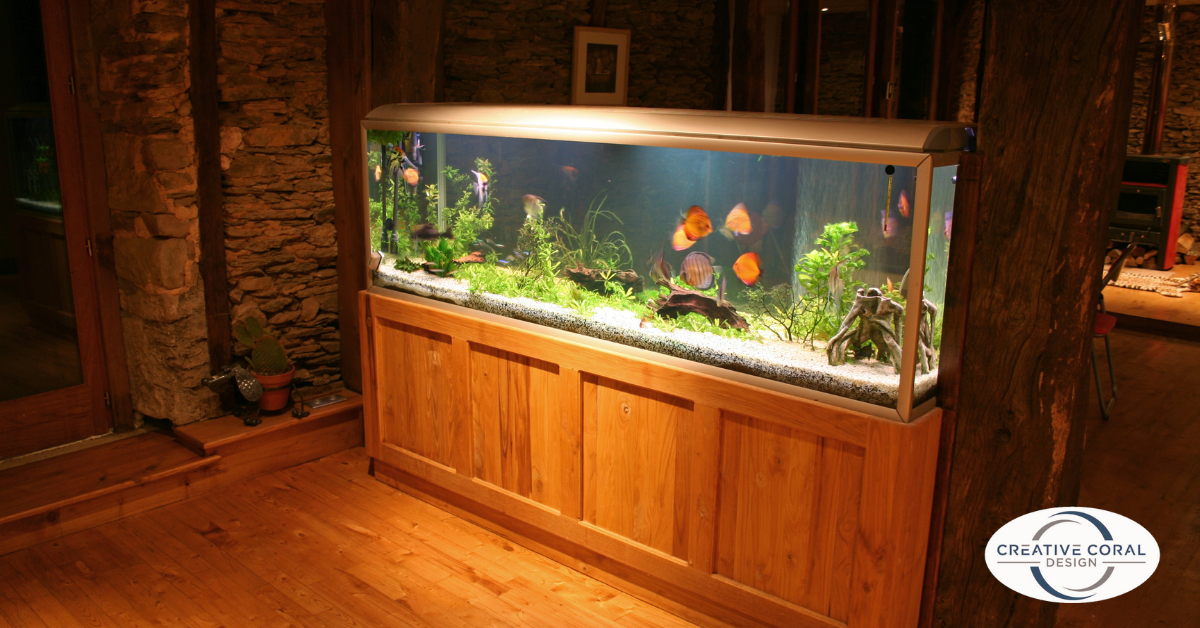
6. How do you plant aquascapes?
Most experienced aquascapers recommend using the “thirds ” rule in setting up your first fish tank with freshwater aquarium plants. This means splitting the visual display into thirds. To make the aquarium more aesthetically pleasing, place corals, decorative pieces, and plants at these intersections. Further, you can get inspiration from various online sources of aquascape types and themes, including nature aquarium style, Iwagumi style, Dutch aquarium, and jungle style.
10 Benefits of a Custom-Made Aquarium
7. How do you clean and maintain freshwater aquarium plants?
Maintaining and changing water is one of the most challenging things when you own a fish tank. When it comes to cleaning, some people clean it once a week, while others clean it once a month. But it depends on various factors, such as the fish tank size, the number of fish you have, and the number of live plants in the tank.
A water tester is recommended to determine the levels of ammonia and nitrates in the water if you have live plants. High levels of these chemicals are dangerous for fish. Remove algae after testing the water for a clear view of the fish. Brush off algae attached to aquarium décor, rocks, or plants with an algae scraper. Then prune the plants by removing dead leaves and trimming down overgrown foliage. Vacuum the substrate to eliminate fish waste, dead leaves, and uneaten food. Clean the filter, change the substrate, and fill the tank with clean water.
5 Tips To Maintain Aquarium Water Quality

8. What aquarium plant fertilizers are needed?
Aquarium plants need nutrients to grow, and they get these from organic wastes like fish poop. However, adding fertilizers helps promote optimal growth. Fertilizers can come as liquid solutions, nutrient-rich soil, or root tabs.
7 Things You Should Know About Setting Up A Freshwater Aquarium
9. How do you set up a fish tank with live plants?
You must plan your tank’s overall look by selecting which plants and substrate to use. Also, prepare the necessary materials, like a regular glass tank, aquarium stand, filter, and lid. This way, you can determine the set-up before planting the live plants and putting your fish inside the tank.
Add a substrate of about 2 to 3 inches to provide ample space for your plants’ roots to establish. Next, mix different plants to add various dimensions and layers to your set-up. Split the tank into the background, midground, and foreground, and determine which plants will go to each space. Start with the background plants, working your way to the front. This way, you’ll have a tank that’s natural looking.
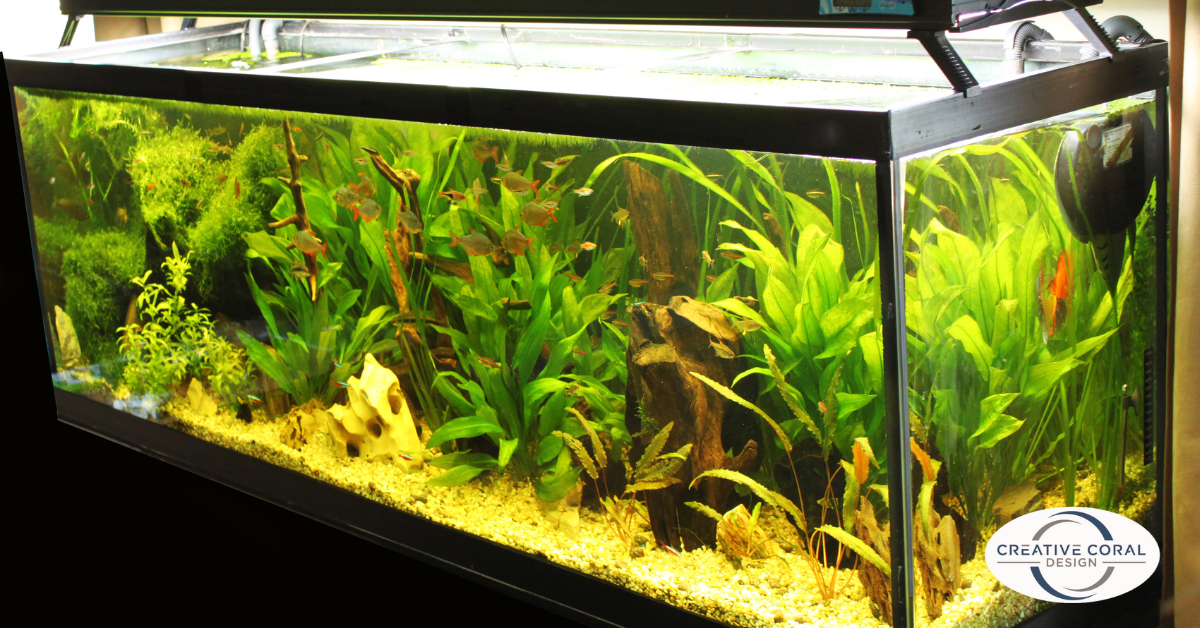
10. Is there a more convenient alternative to keeping live plants in the tank?
The most effective way to create a realistic underwater habitat is to ensure plants thrive and grow beautifully. But for beginners, this can be hard to achieve. Artificial corals are an environment-friendly and sustainable alternative, which can be used for freshwater and saltwater aquariums alike.
With live coral, you need to monitor the water quality in the tank to keep them alive. But with artificial coral, you just take it out of the tank during your regular maintenance, and give it a gentle brushing and thorough rinse to remove excess algae or dirt buildup.
Additionally, artificial coral inserts are way more cost-effective than live coral and are even cheaper than dead coral, which still needs to be harvested from the sea. One of the best things about man-made corals is that they can be customized to fit your aquarium’s theme.
Choose Exhibition-Grade Artificial Corals & Reef Inserts For Your Customized Aquarium
Where To Source Artificial Corals & Reef Inserts
Creating a beautiful aquatic environment for your fish can be achieved through well-planned, designed, and fabricated theme environments using artificial corals and inserts.
Whether you choose a live or artificial reef, adding an aquarium to your home will bring the ocean’s beauty inside adding a unique element that is enjoyable and proven to relieve stress.
Here at Creative Coral Design, we make sure to provide the finest coral replicas, reef inserts, and custom aquarium design services for residential, commercial, and public aquariums.
We have been designing and fabricating artificial coral reefs, freshwater habitats, and themed environments for over 40 years. We’ve also fabricated and installed one-of-a-kind custom aquariums and themed environments for numerous residential, commercial, zoos, and seaquarium clients.
Our team of experts, master craftsmen, and veteran aquarium designers produce some of the finest coral and reef inserts on the market — at prices that novice and experienced aquarium owners alike will appreciate. Whether your approach is no expense spared or every dollar scrutinized, we can help you turn your vision into a reality. Connect with us today and let our team work on a tailor-made solution.




